As the air becomes a little brisker over the last few days, the chill enhances visual clues that autumn has officially arrived. Leaves slowly change from their summer greens to vivid Fall oranges, browns, and reds.
During weekend walks around Pennsylvania, another signal of the season is unmistakable: the black and yellow outfits, contrasted with the green and whites, not to be outdone by the purple and blacks. Yes, football season is in full swing, as loyal fans cheer on their squads, often with reflections on past teams or players.
Many Pennsylvania college athletes go on to successful professional football careers. Twenty-seven have been inducted into the National Football League Hall of Fame, located only two hours from Pittsburgh in Canton, Ohio. The trip is well worth it, even for the casual Pennsylvania football fan.
Ohio’s Wrought Iron Bridge Company
Football is not Canton’s only historic claim to fame; it is also known as the home of the Wrought Iron Bridge Company, producer of many metal truss bridges erected in its neighboring state to the east.
Founded in Canton by David Hammond in 1864, the Wrought Iron Bridge Company developed into one of the most prolific bridge manufacturers of the late 19th century. In 1900, the company was one of 28 steel and bridge building companies consolidated to form the American Bridge Company.
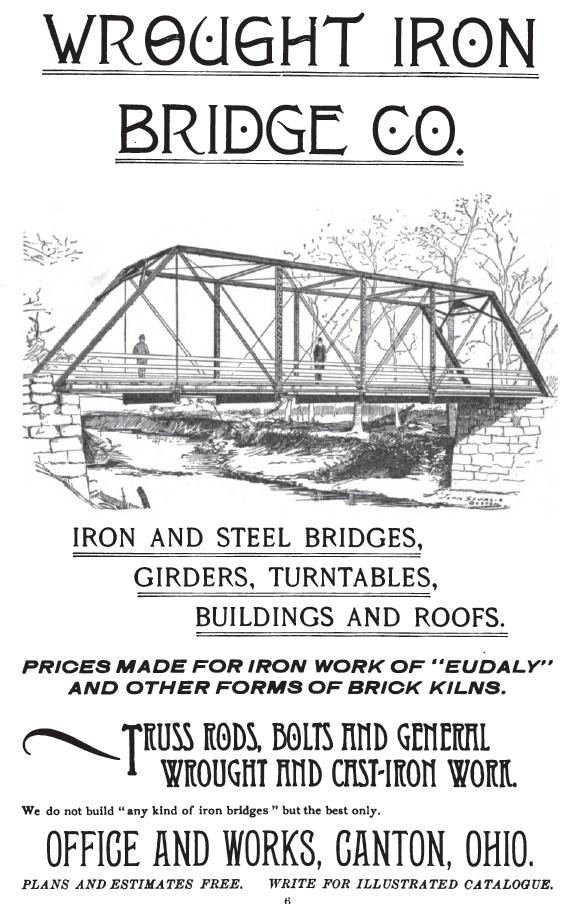
Specializing in short span trusses, the majority of bridges manufactured by the Wrought Iron Bridge Company were constructed for roadway use. Similar to early 20th century mass-produced houses sold through Sears and Roebuck catalogs, American Bridge Company advertised their structures through the mail. Bridges were shipped in pieces by train to the nearest station, where the contractor waited to retrieve and assemble the structures on site.
Many remain throughout the commonwealth, including one located in and owned by York County.
Brief History of County Bridge #226
County Bridge #226 carries Hull Drive over Bermudian Creek in a rural setting south of the village of Kralltown in Washington Township, York County. Two different truss types make up the structure – a 68-foot-long pony truss joins with a 151-foot-long pin-connected Pratt thru truss.
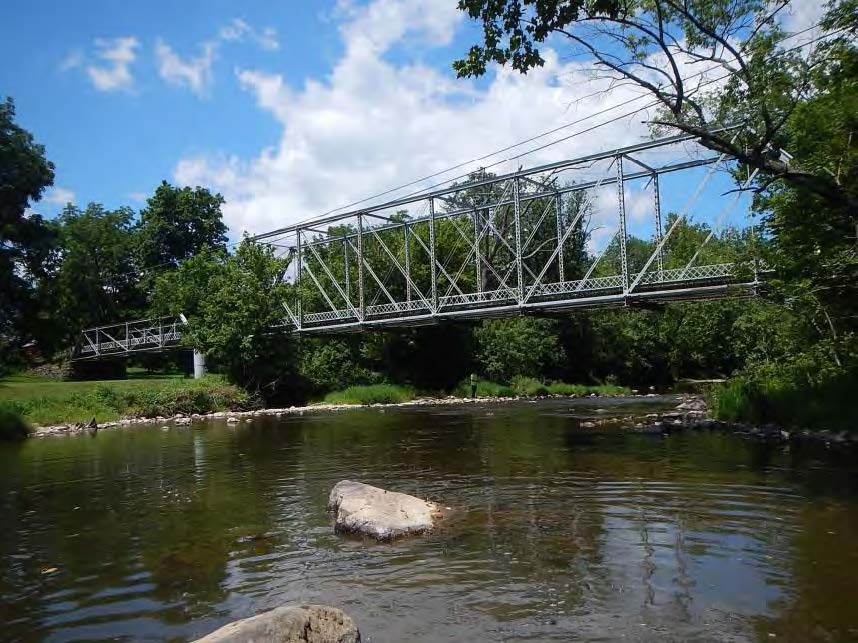
The structures were erected at this location in 1917 to replace a covered bridge and rest on stone piers associated with the earlier crossing. Metal caissons sunk into the floodplain below the structures support the bridge ends. A plaque was attached to the through truss, now lost, and dated the structure to 1896 and identified the Wrought Iron Bridge Company as the manufacturer. No such information is available on the pony truss.
In 1995, the crossing was recognized for its engineering significance and determined eligible for the National Register of Historic Places. The bridge is identified in CRGIS as “Bridge on Hull Drive,” Key #101528.
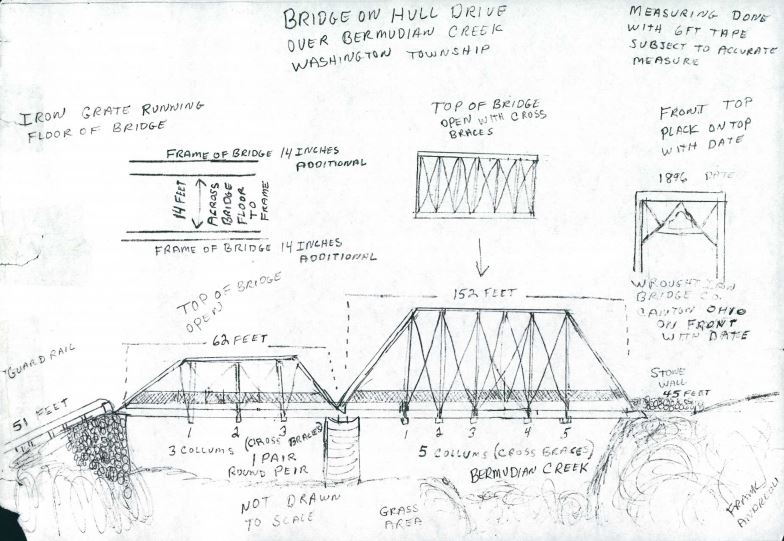
The bridge is significant as an early example of both a Pratt pony and thru truss spans, early use of rolled metal truss members, decorative lattice railing, and built by the Wrought Iron Bridge Company, an important metal truss bridge builder.
Wear and Tear
By the time PennDOT began working with the bridge owner, York County, on a rehabilitation project in 2013, wear and tear of nearly 100 years of service was showing.
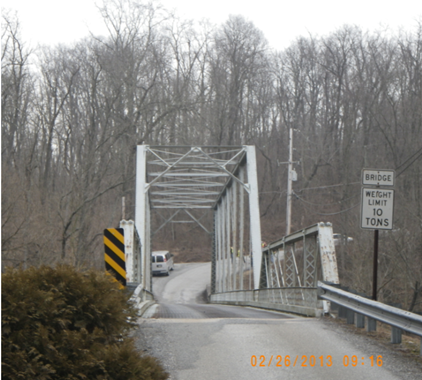
Damage included:
- Pitting and corrosion were noticeable through the trusses and floor systems as the flaking paint exposed the main wrought iron members.
- Loose bolts and missing rivets resulted in a failing railing system.
- Hairline cracks lined the forged eye loops of the tension members. Section loss was evident throughout, some more substantial than others.
- One member exhibited a 1”x3” hole; another measured 6”x1”.
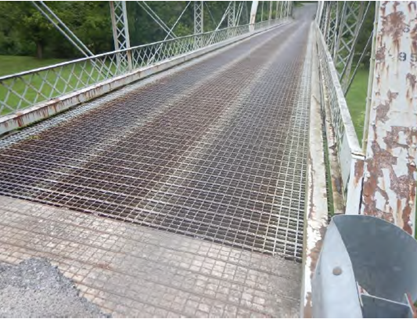
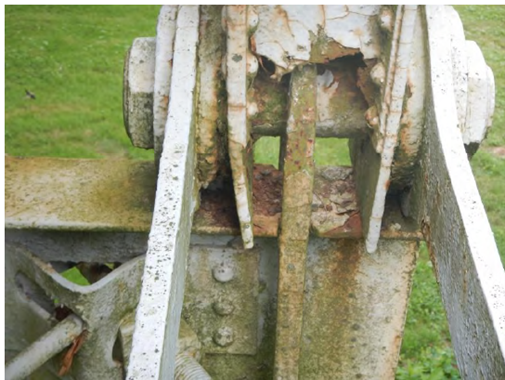
PennDOT’s most urgent concern was fatigue of members caused by oversized vehicle use. Engineers determined safe loads could not exceed 10 tons. That concern was proven valid during a project team meeting on site.
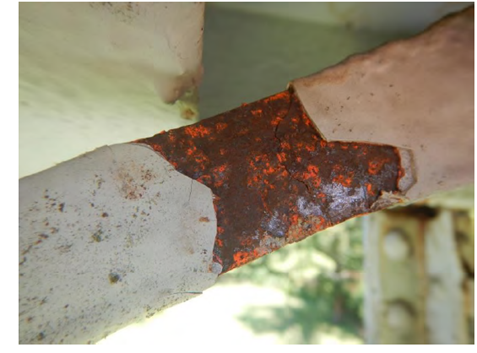
A fully-loaded tractor trailer approached the bridge from the east. It was clear that the vehicle exceeded the weight posting, and the driver was fully aware. Upon seeing the PennDOT project team gathered beside the bridge, the driver reconsidered crossing the stream and reversed course. Given its rural setting, this was likely not an isolated incident, and contributed to damage caused by overstressing.
Rehabilitating County Bridge #226
PennDOT determined County Bridge #226 could be rehabilitated to meet the project needs while retaining the characteristics making it National Register-eligible.
In October of 2015, the State Historic Preservation Office concurred the work would not adversely affect the historic truss bridge. The structure would remain load-posted at 10 tons, but historically sensitive repairs would keep it on the transportation network. The existing weight limit signs were updated and two new ones added along the bridge approaches.
The proposed scope of work included:
- cleaning and repainting truss members;
- repairing the decorative lattice railing and heat-straightening two bent eye bars;
- replacing the deck, floor beams, and stringers; and
- introducing steel bolts covered with button heads resembling the original rivets.
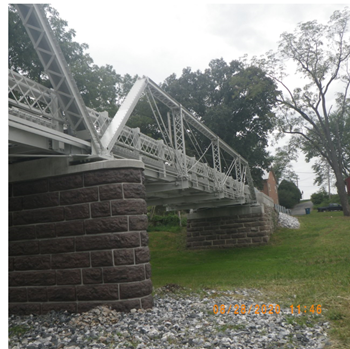
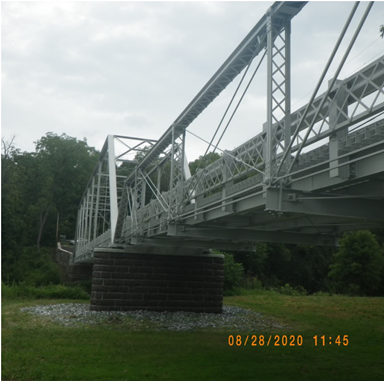
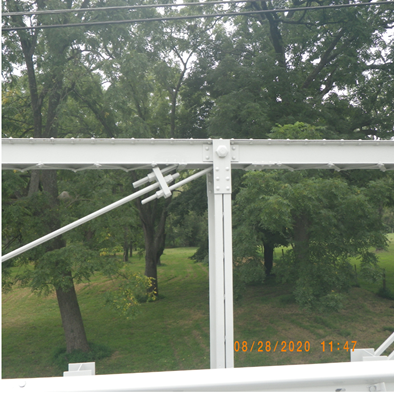
In the spring of 2020, the contractor lifted County Bridge #226 off its abutments and began the rehabilitation. Ultrasonic testing of each member was utilized to detect previously unidentified cracks; none were found.
The contractor completed the rehabilitation and on July 16, 2020, Hull Drive’s crossing of Bermudian Creek reopened to traffic.
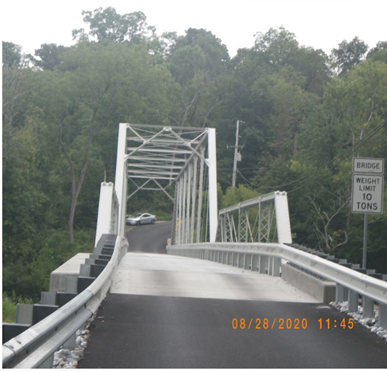
As traffic needs change, the number of metal truss bridges in use on roadways of the commonwealth has decreased. However, PennDOT understands the importance of historic preservation and strives, wherever possible, to preserve its collection of historic metal truss bridges and encourages the preservation of the many county and municipally owned historic truss bridges across the commonwealth.
Much like the trees’ changing foliage dropping and needing raking and maintenance, York County is committed to investing in the work required to ensure this picturesque structure continues to thrive.
Today’s guest contributor is Jeremy Ammerman. Jeremy Ammerman is currently an employee of the Pennsylvania Department of Transportation, who oversees above ground cultural resources for engineering districts 8 and 9. His ten year journey with the Department began after leaving the Iowa Flood recovery effort in 2010. Job duties ranged widely during his two year tenure from work involving restoring Frank Gehry buildings at the University of Iowa campus, involvement with the rehabilitation of the Park Inn Hotel in Mason City (last surviving Frank Lloyd Wright designed hotel in the world), and close collaboration with a house moving team featured on Discovery TV’s Jacked, and Mega Movers, along with TLC’s Heavy Haulers to relocate existing historic building stock of heavily impacted areas similar to Cedar Rapids. Upon joining the Department, he was able to rekindle his passion for agriculture by re-engaging in the Agriculture History Project previously worked on as a graduate student at Shippensburg University. Now with the Department, he has overseen a few bridge rehabilitations projects ranging from stone arches to metal trusses, relocated two metal truss bridges, facilitated the creation of local history course for honor students at Elizabethtown College, and produced a few agricultural Pennsylvania Historic Resource Survey Forms. At the same time can be pointed to as the designer for the Capital Beltway sound wall design (occasionally referred to as the Partridge Family bus design scheme), a regular annoyance to the SHPO, and can be the cause of traffic detours while performing asbestos testing on highways within his districts.
Comment Policy
PHMC welcomes and encourages topic-related comments on this blog. PHMC reserves the right to remove comments that in PHMC’s discretion do not follow participation guidelines.
Commenters and Comments shall be related to the blog post topic and respectful of others who use this site.
Commenters and Comments shall not: use language that is offensive, inflammatory or provocative (this includes, but is not limited to, using profanity, obscene, or vulgar comments); disparage other commenters or people; condone illegal activity; identify the location of known or suspected archeological sites; post personal information in comments such as addresses, phone numbers, e-mail addresses or other contact details, which may relate to you or other individuals; impersonate or falsely claim to represent a person or an organization; make any commercial endorsement or promotion of any product, service or publication.
If you would like to comment on other topics not related to this blog post but related to PHMC, please fill out the PHMC Contact Us Form.
Maybe we should use drones to make 3D models of these historic bridges before they fall apart? Let me give it a try and show you if it works well. Any historic bridges near Pittsburgh you want modeled? Give me a call.
Cheers,
Justin Johnston
231-282-2192